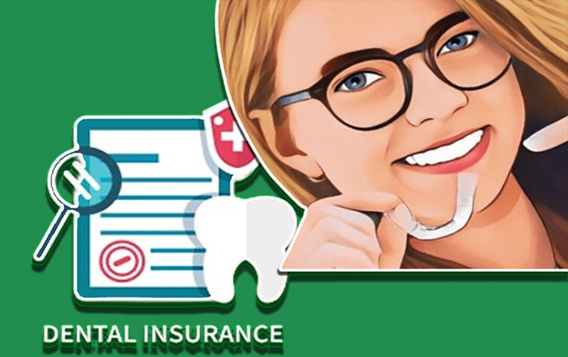Invisalign is a common and effective substitute for braces for straighter teeth because it doesn’t involve the use of metal brackets or wires. Despite the advantages, some patients may find the cost of treatment expensive. For that reason, many people are curious about Invisalign and whether dental insurance plans will cover the treatment.

Depending on the kind of clear aligners you receive for treatment, your insurance plan, and your orthodontic issues. Moreover, dental insurance may pay all or part of the cost of Invisalign.
Does Dental Insurance Cover Invisalign
Yes, dental insurance can cover Invisalign. This means you have options to help lower your out-of-pocket expenses. Coverage amounts vary per plan. Typically, insurers pay a portion of the cost of orthodontics. Also, keep in mind that some insurance only covers orthodontics if they are medically required.
Therefore, Invisalign may be excluded if it is seen as a cosmetic procedure. Furthermore, if your dental plan includes conventional braces, your insurance may cover Invisalign in the same way. Furthermore, simply ensure that Invisalign, in particular, is included.
What is Invisalign
Invisalign is an orthodontic therapy in which you wear a set of clear, plastic, removable aligners to progressively reposition your teeth into their right places. As instructed by their dentist, the patient wears each set of aligners for a few weeks before switching to the next pair until the course of treatment is over.
How Much Does Invisalign Cost
The price range for Invisalign is $1,200 to $8,000. Given the broad range, numerous factors can influence the cost of Invisalign treatment, including:
- Treatment duration: The longer you require treatment, the more it will cost.
- Treatment complexity: Mild dental repairs require less difficult treatment, potentially saving money. However, more serious abnormalities, such as malocclusion or crooked teeth, may incur additional costs.
- Dental practitioners: with more experienced practitioners, the product may cost more.
- Location: The cost of living in the location where your dentist practices can have an impact on treatment expenses.
- Patient compliance: Fewer accidents may happen if patients follow their dentist’s advice to the letter. This lowers expenses by avoiding the need to prolong the course of treatment.
How Much Does Invisalign Cost Without Insurance
Some insurance policies do not cover transparent aligners because they are considered cosmetic surgery rather than medical ones. Cosmetics refers to procedures performed solely for beauty. If your insurance does not cover Invisalign, you will be responsible for paying the whole cost.
Understanding Invisalign Dental Insurance
Invisalign is a cost-effective alternative to traditional braces, but its high cost may be covered by dental insurance plans. The price of Invisalign varies from $3,500 to $8,000 according to how serious the problem is. Financial assistance, flexible payment plans, and dental insurance can help make it more reasonable. The article discusses five critical considerations to consider while choosing Invisalign dental insurance.
Invisalign is an investment
It’s crucial to be aware that Invisalign is an investment, even if your dental insurance could cover a portion of the cost. The health and function of your mouth are critical to your overall well-being. Invisalign offers long-term benefits for maintaining oral health, boosting confidence, and improving quality of life.
Coverage plans
Most dental insurance companies provide a variety of coverage options. Generally, the most basic policies exclude coverage for Invisalign. If you want dental insurance through Invisalign, be sure you sign up for a plan that covers the surgery. You can lower your out-of-pocket expenses in this way. Visit dentalinsurance.com to verify or locate a dental insurance plan for Invisalign braces in your area if you’re unsure about your provider or plan.
Coverage amount
A standard dental insurance plan will cover the cost of Invisalign treatment to a maximum of 25% to 50%. It’s important to contact your provider to find out the amount your dental insurance will cover for Invisalign. Certain dental insurance plans offer an orthodontic rider that might help with a portion of the cost. You must pay an additional premium for this addition to your dental insurance. Dental insurance plans have an annual maximum coverage limit of $1,500, which is crucial for those planning to get additional dental work in addition to Invisalign.
In-network and out-of-network
Most dental insurance plans include a contracted network of dentists that they have negotiated savings with. If you choose an in-network provider, your dental insurance will likely cover a larger portion of the cost. If you see an out-of-network practitioner, you could still be able to get Invisalign dental insurance.
However, you will most likely need to pay a larger portion of the bill out of pocket. Moreover, ensure the dentist you chose offers Invisalign and is in the network of your dental insurance provider before making a choice.
Alternative ways for payments
Beyond using dental insurance, you have additional choices for financing your Invisalign procedure. Additionally, multiple orthodontists have payment options, which may help lower the cost of Invisalign.
By signing up for one of the available dental savings plans, you can reduce the cost of your dental care. Despite not offering dental insurance, these plans can cover the cost of treatments like Invisalign. Moreover, using an FSA or HSA account is an additional choice. You can pay for Invisalign or other dental work with an HSA or FSA account that your employer offers.

